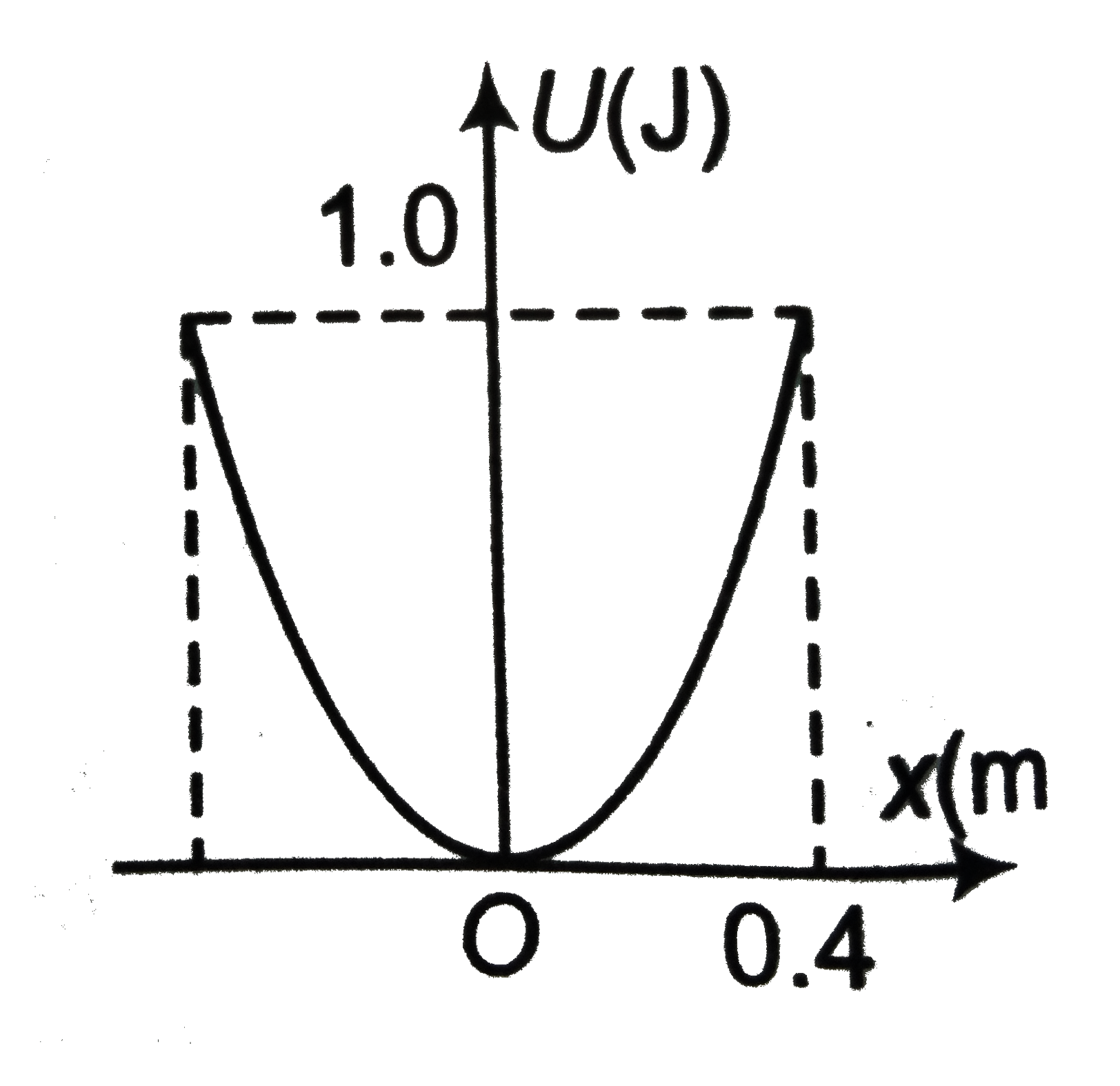A particle of mass 3 kg moves in aone dimensional field along x-axis. The force due to the field depends on its position as F=729x6−64 . Find the state equilibrium position. Determine the time period of osciallations for small amplitude osciallations about the stable equlibrium position.
x=−23,T=π4√3s
Topper's Solved these Questions
- BOOK - AAKASH INSTITUTECHAPTER - OSCILLATIONSEXERCISE - EXAMPLE21videos
OSCILLATIONS
- BOOK - AAKASH INSTITUTECHAPTER - OSCILLATIONSEXERCISE - Exercise20videos
OSCILLATIONS
- BOOK - AAKASH INSTITUTECHAPTER - OSCILLATIONSEXERCISE - ASSIGNMENT ( SECTION-I(SUBJECTIVE TYPE QUESTIONS) )7videos
OSCILLATIONS
- BOOK - AAKASH INSTITUTECHAPTER - NUCLEIEXERCISE - ASSIGNMENT (SECTION-D)10videos
NUCLEI
- BOOK - AAKASH INSTITUTECHAPTER - PHYSICAL WORLDEXERCISE - ASSIGNMENT (Section-B)5videos
PHYSICAL WORLD
Similar Questions
A particle of mass m is located in a unidimensional potential field where potential energy of the particle depends on the coordinates xasU(x)=Ax2−Bx where A and B are positive constant.
Find the time period of small oscillation that the particle perform about equilibrium position.View SolutionA particle of mass m is located in a one dimensional potential field where potential energy of the particle has the form u(x) = ax2−bx), where a and b are positive constants. Find the period of small oscillations of the particle.
View Solution
Knowledge Check
- Question 1 - Select One
A particle of mass 2kg moves in simple harmonic motion and its potential energy U varies with position x as shown. The period of oscillation of the particle is
 A2π5sB2√2π5sC√2π5sD4π5s
A2π5sB2√2π5sC√2π5sD4π5s - Question 2 - Select One
A particle of mass 1 kg is moving along x - axis and a force F is also acting along x -axis in such a way that its displacement is varying as : x=3t2. Find work done by force F when it will move 2m.
A12 JB16 JC32 JD42 J - Question 3 - Select One
A particle of mass m is located in a one dimensional potential field where potential energy of the particle has the form U(x)=ax2−bx where a and b are positive constants. The position of equilibrium is:
Ab2aB2baCabD2ab
A massless rod of length L has two equal charges (q) tied to its ends. The rod is free to rotate in horizontal plane about a vertical axis passing through a point at a distance L4 from one of its ends. A uniform horizontal electric field (E) exists in the region. (a) Draw diagrams showing the stable and unstable equilibrium positions of the rod in the field. (b) Calculate the change in electric potential energy of the rod when it is rotated by an angle Δθ from its stable equilibrium position. (c) Calculate the time period of small oscillations of the rod about its stable equilibrium position. Take the mass of each charge to be m.
View SolutionThe force acting on a body moving along X-axis varies as shown.Its stable equilibrium position is :
View SolutionPotential energy (U) of a body of unit mass moving in a one-dimension conservative force fileld is given by, U = (x2 – 4x + 3). All units are in S.I. (i) Find the equilibrium position of the body. (ii) Show that oscillations of the body about this equilibrium position is simple harmonic motion & find its timeperiod. (iii) Find the amplitude of oscillations if speed of the body at equilibrium position is 2√6 m/s.
View SolutionForce acting on a particle constrained to move along x-axis is F=(x−4). Here, F is in newton and x in metre. Find the equilibrium position and state whether it is stable or unstable equilibrium.
View SolutionA particle of mass m is executing oscillations about the origin on the x-axis, it's potential energy is U(x)=k|x|2, where k is a positive constant, if the amplitude of oscillation is a, then it's time period T is
View Solution

